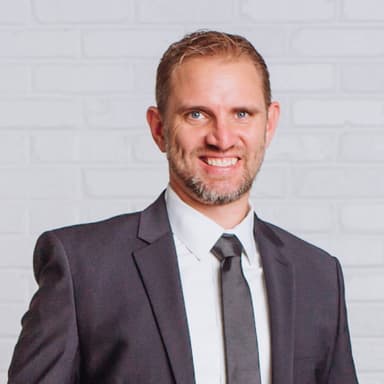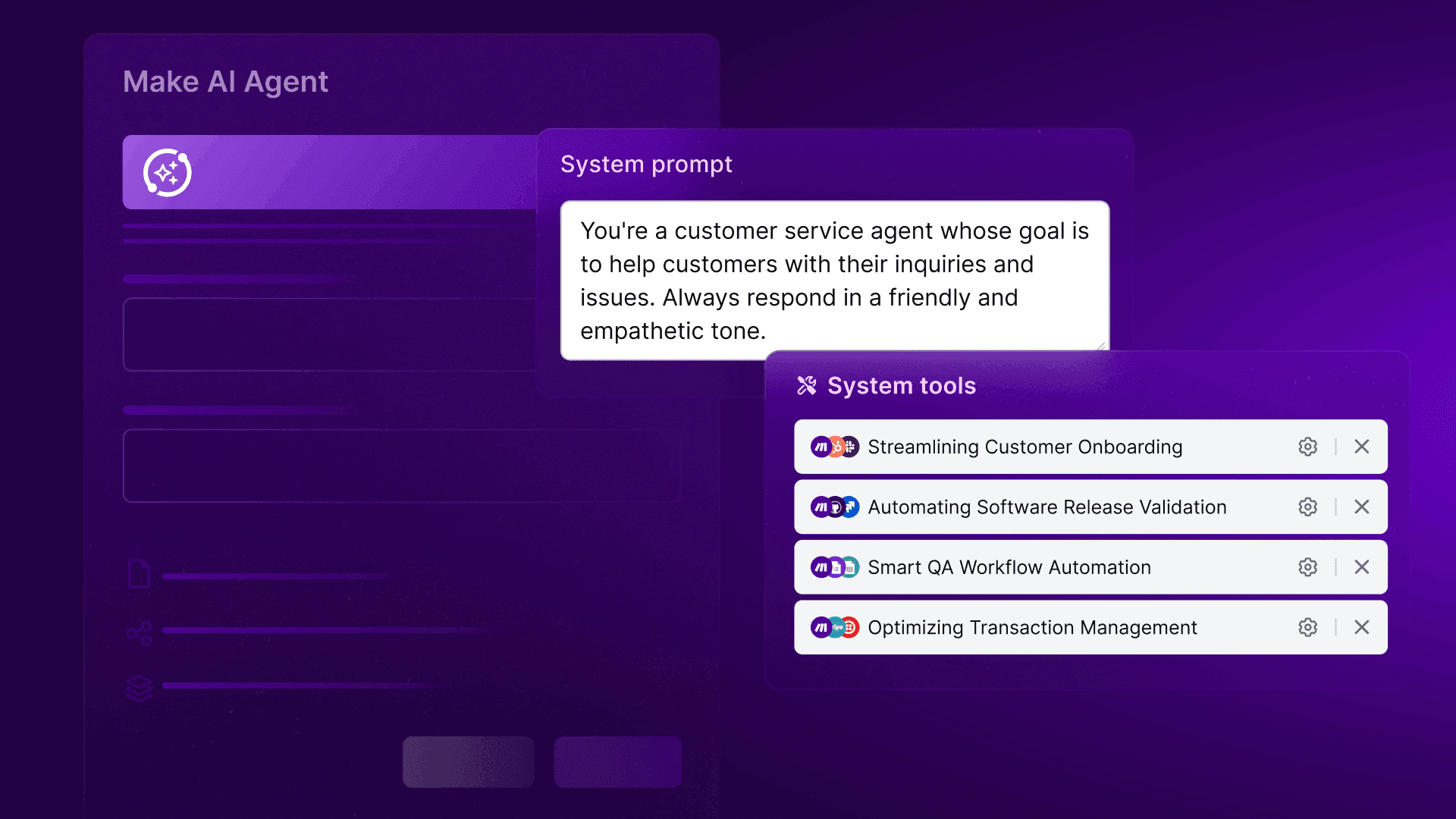Sep 4, 2025 | 3 minutes
The opportunity isn’t AI – it’s what you make with it
At Make, we believe that innovation is only as valuable as the impact it helps you create. Darin Patterson, Make’s VP of Market Strategy, talks ‘visual orchestration’: our unique ingredient to helping people 'make it happen'.

At its core, Make is an innovation company. Back in 2016, we created a groundbreaking automation platform to help people push the boundaries of what they thought was possible. Now, we’re front runners in helping our customers leverage the biggest innovation of the 21st century – artificial intelligence. This year, we’ve launched two game-changing products: Make AI Agents and Make Grid. But we don’t innovate for the sake of innovation.
All too often, companies chase what’s new and shiny. And amid the urgency, a critical question is overlooked: What impact are we making with this? A recent MIT report suggests that 95% of AI pilots are failing. At Make, we’re focused on purposeful innovation that empowers people. To unlock the power that exists within our customers to do more, achieve greater results, and unleash their creativity within their businesses.
Our promise is to help you ‘make it happen’. To help you drive genuine impact. For your business. For your team. And for yourself. It’s why we’re called Make.
So how do we do this? The key lies in the term ‘visual orchestration’.
It’s a term with hidden depths. It has shaped Make from the beginning. And it has shaped my personal journey with Make too.
From the start, Make has always been ‘visual-first’. Make’s founders crafted a vision to get powerful technology into the hands of people with the will and creativity to do great things with it. To achieve this, they knew they had to think not just about the platform’s capabilities, but how it feels to use it and see its results. They took an incredibly unique, visual-first approach so that Make was not just user-friendly, but actually felt like magic. Because it’s in that mindset that learning comes easy, that ideas spark, and that innovation flows.
And they nailed it. This combination of power and playfulness is why I became a Make fan and it’s why I then joined the team. Because of this approach, we see that Make users literally feel powerful and capable of solving key business challenges while using Make.
During Make’s early days, I was a product leader at a large enterprise. I was evaluating over 200 automation platforms globally, looking for a diamond in the rough. When I tried Make, I felt that it pulled off a magic balancing act of being both engaging and powerful. I was hooked. And when the time was right, I made the step from Make fan to teammate because I believed in the mission – to empower innovators to visually create, build and automate to their true potential.
This visual-first ethos has become even more important today as we embrace artificial intelligence. A technology that brings complexity as much as it brings possibilities. AI requires radical transparency, thoughtful orchestration, and the ability to experiment quickly. Crafted around how we explore, learn and live; as my good friend and our founder Patrik Simek explains:
The idea that formulaic, stripped-down design choices keep our relationship with technology simple and tidy simply isn't fit for an increasingly nuanced and multifaceted digital frontier. Instead, we all need more understandable and more immersive ways to make sense – and make the most – of the Agentic Age.
When we launched Make AI Agents at the start of 2025, we knew that our ‘visual-first’ approach would bring a critical additional benefit: control. That the confidence to explore the emerging agentic age with clarity and precision would be the crucial difference between surviving and thriving in this new world. Lorenz Becker, CFO at Greyt, describes how with Make AI Agents they have the confidence to “operate like a 500-person company with only 60 people.”
With the launch of Make Grid, released to the public earlier this year, we pushed the power of visual-first even further. Make Grid is a first of its kind, auto-generated visual map, that delivers a holistic view of your AI and automation landscape. It’s a unique, visual-first approach to ‘orchestrating’ all of your AI and automation efforts – in one place.
I love this concept of “orchestrating” and applying it to business. Think of the conductor of an orchestra. They see the bigger picture, what works together, where harmony can be found. And they create something beautiful; something even magical and awe-inspiring. Make Grid empowers people to orchestrate their businesses and bring about those harmonies. You can see how AI and automations connect together across workflows, key systems, teams and departments. Giving a common visual language to this effort and helping you scale quicker and adapt more quickly to a fast changing landscape. And yes, I also think it looks like a work of art.
Make Grid helps you see more in order to know more – and ultimately do more. As German Bernhart, Principal Product Manager at Make, puts it: “when teams have this kind of clarity, they have the confidence to evolve faster.” This is an idea backed up by one of our valued customers, Leon Rainalter, Operational Excellence Specialist at Wemolo, who recently told us: “With Make Grid, we now have a visualization of all scenarios, how they’re used, and how they interact. It’s much easier to see if a company or operational change needs to be reflected in the automations.”
And so you have it: ‘visual orchestration’. The ability to see, control and build understanding of your AI and automation landscape, by making the invisible visible. To help you move faster, think bigger and collaborate along the journey.
I’ve taken you through what visual orchestration is and why it’s powerful. The part it’s played in my journey and Make’s journey. And the role I hope it will soon play in yours too. Because Make really is nothing without you - that’s why we want to make you as powerful as you possibly can be. And that’s why we feel so strongly about empowering you to ‘make it happen’.
I’m looking forward to hearing your ‘make it happen’ story too.
Start automating with Make today!




